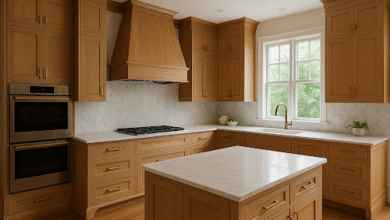What to look for when moving to a new housing community

Moving to a new area can be exciting. Every community has a way about itself, which impacts your lifestyle, family dynamic, and overall wellness. Given the neighborhood characteristics, we can accurately guess how residents use infrastructure, enjoy amenities, and conduct their lives.
But what should people look for when choosing a new housing community? With so many questions to consider, how should they prioritize?
The article below tries to explore this topic in detail and provide you with some valuable insights. When you employ some of these principles, you’ll know what to look for and have peace of mind. So let’s dive in.
What’s the crime rate like?
While the overall crime rate for the city is not a strong indicator of crime in separate local communities, it is valuable information, nevertheless. By the rule of thumb, downtown areas are less safe than suburbs and close-knit communities, and gated neighborhoods offer the most peace of mind.
Ideally, you can find interactive maps with crime statistics for different areas. Alternatively, you can conduct your survey by asking a few neighbors about their experiences in the last couple of years.
Can you afford the place long-term?
Whenever people buy new properties, there is one prevalent emotional outlook – optimism. Feeling good and dismissing worries makes it easy to create cognitive dissonance, leading to bad decisions.
Therefore, it is vital to calculate your new lifestyle. Ask around and see how much you’ll owe in local taxes, landscape maintenance, amenity fees, and transportation costs. If the math adds up, you are good to go.
Luxury homes offer plenty of space. Therefore make sure you use your acreage lot by creating garden space, outdoor living areas, or something that utilizes the property. Look for energy-efficient properties with integrated technology and included upgrades.
Transportation options
While transport can significantly impact your monthly budget, money alone is not the problem. Many people find out later in life that commutes can eat away hours, interfering with spare time and quality moments spent with your family.
Make a calculated route that considers work, school, grocery shopping, and other activities, and see whether or not you are comfortable with the idea of driving, taking the bus, or walking around.
By and large, the best communities feature convenient access to walking and biking lanes, making family members independent and mobile. Unsurprisingly, studies show that shorter commutes are better for your health.
Local amenities
Depending on your family preferences, and the local climate, you might want to look for a community with close access to recreational facilities, dining, swimming pools, walking paths, or dog parks.
Similarly, you might want to find extracurricular activities for your children nearby, a family doctor’s office, chiropractors, massage therapists, and veterinarians.
Some people would enjoy golf, shopping venues, and community areas such as clubs, so review your preferences before you start searching for a place to move.
Schools
Different school districts offer different levels of professionalism and excellence. If quality education is on the top of your priority list, find an area with good schools nearby, and ask about their enrolment policies.
It is not uncommon for parents to visit elementary schools and high schools in person, just as they would when choosing a university. Only one or two conversations with some program directors or teachers will let you decide whether the place is good for your children.
Good educational facilities have adequate budgets to spend, which shows immediately and upon entrance.
Entertainment
You may look at things from the vantage point of your current family dynamic, but try to forget your lifestyle for a moment and think about the possibilities. You may not be particularly interested in outdoor activities, but ask yourself this: have you had the chance to enjoy them before?
Changing to a new area with a different climate may change your entertainment preferences, so take a minute to ponder.
Make sure you understand the climate and know what to expect because tolerance to cold or heat is not something that builds overnight. Moreover, see if there are parks in the area, nearby hills for hiking, recreation facilities, and access to wilderness.
Get to know your closest neighbors.
While local amenities and urban infrastructure can significantly improve your quality of life, neighbors can introduce more frustration than you are willing to handle.
Given the stakes, make an effort and meet your closest neighbors for a chat. You’ll learn plenty about the property and the community as well.
Check pricing trends for the area.
Single-family properties tend to vary wildly in price. Because of this, it is vital to assess the overall trend of the area. This way, you can see whether the average home is on the up.
Eventually, you may have to move due to job opportunities or college, so why not make sure your home is a real estate investment?




